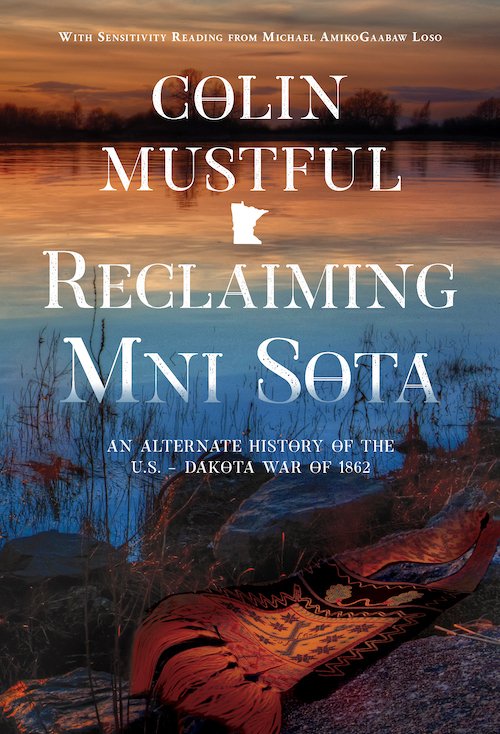Little Crow and Hole-in-the-Day: Two Prominent Native American Leaders
Little Crow and Hole-in-the-Day were two influential Native American leaders in Minnesota during the mid-19th century. Both played significant roles in the relationships between their respective tribes and the U.S. government. Both also met tragic ends while leaving behind a lasting legacy.
Hole-in-the-Day: A Diplomat and Controversial Figure
Hole-in-the-Day, also known as Bagone-giizhig, was a leader who represented the interests of some, but not all, of the Ojibwe people in Minnesota. He was known for his tough diplomacy and ability to protect his people's interests during a time when many other Native communities were losing their sovereignty. However, his methods were not without controversy.
While he fought for his people's rights, Hole-in-the-Day also engaged in questionable partnerships with local authorities, which allowed him to benefit personally. He lived a life of relative luxury while many of his people faced poverty. This led to criticism that he was taking advantage of his position for personal gain.
At the outbreak of war in 1862, Hole-in-the-Day threatened to launch a simultaneous war against whites in northern Minnesota, causing a panic throughout the region. White Minnesotans fled to nearby Fort Ripley where additional soldiers were sent to protect them. However, Hole-in-the-Day met and met and negotiated with white leaders near Crow Wing in what has been called The U.S. - Ojibwe Conflict of 1862.
Despite the controversies surrounding Hole-in-the-Day, he was highly effective in negotiations and played a key role in major treaties between the Ojibwe and the U.S. government. But also, his ambition and insistence on being recognized as the chief of all Minnesota Ojibwe created rivals among his contemporaries.
Little Crow: A Respected Dakota Leader
Little Crow, whose Dakota name was Taoyateduta (His Red Nation), was born into the Mdewakanton village of Kaposia around 1810. Little Crow left Kaposia and resettled at Lac Qui Parle where he developed political relationships with white missionaries and fur traders such as Henry Sibley. Upon returning to Kaposia after the death of his father, Little Crow became widely recognized as a spokesperson for the Lower bands of Dakota.
In 1851, Little Crow was among the lead negotiators that helped shape the Treaty of Mendota. During negotiations, Little Crow insisted that the U.S. government pay all monies due them from the 1837 treaty before discussions could move forward. Then, in 1858, Little Crow led a delegation of Dakota to Washington D.C. where Dakota leaders were pressured into ceding their reservation lands on the northern side of the Minnesota River.
In 1862, Little Crow lost an election for tribal spokesman and shortly after began adopting white ways of living and culture. When war broke out between the Dakota and the white settler population of the region, Little Crow spoke out against the conflict, warning the Dakota Soldier’s Lodge that they could not win a war with the whites. Nevertheless, he agreed to lead his people in the face of overwhelming odds.
Tragic Endings for Both Leaders
Both Hole-in-the-Day and Little Crow met tragic ends. Hole-in-the-Day was assassinated by a group of Ojibwe from Leech Lake in 1868 just shortly after he departed for a trip to Washington D.C.. His death shocked Minnesota and left a void in Ojibwe leadership. Meanwhile, Little Crow was killed in 1863 after returning to Minnesota following an unsuccessful attempt to gather support for continued war in the west and Canada. The man who shot and killed Little Crow, Nathan Lamson, was paid $500 by the state of Minnesota for doing so.
The legacies of these two leaders are complex. Hole-in-the-Day's controversial methods and personal gain overshadowed his accomplishments as a diplomat. Little Crow, on the other hand, remained a respected leader who fought for his people's rights while holding true to his Dakota beliefs, but he also lost everything and died with only his son left at his side.
Little Crow and Hole-in-the-Day were prominent leaders of their respective tribes during a tumultuous time in Minnesota's history. Their leadership styles and legacies differed greatly, but both played significant roles in shaping the relationships between their tribes and the U.S. government. Despite their tragic endings, their contributions should be remembered and analyzed within the context of the challenging circumstances they faced.
Sources:
Gabriel Lagarde, “Hole in the Day, or Bug o ne giizhig Famed Ojibwe chief leaves checkered legacy 150 years after assassination,” Spotted Horse, Published July 7, 2018, Accessed October 19, 2023, https://www.winonaladuke.com/winona-blog/150yearschiefholeintheday
Jack K. Johnson, “History of Old Fort Ripley 1848 - 1877,” Minnesota Military & Veterans Museum, Published November 2015, Accessed October 19, 2023, https://www.mnmilitarymuseum.org/resources/mn-military-history/old-fort-ripley/
Andrew B. Stone, “Bagone-giizhig (Hole-in-the-Day the Younger), 1825–1868,” MNopedia, Published May 20, 2013, Accessed October 19, 2023, https://www.mnopedia.org/person/bagone-giizhig-hole-day-younger-1825-1868
“Taoyateduta (Little Crow),” The U.S. - Dakota War of 1862, Accessed October 19, 2023, https://www.usdakotawar.org/history/taoyateduta-little-crow#
“Little Crow,” Wikipedia, Last Updated September 27, 2023, Accessed October 19, 2023, https://en.wikipedia.org/wiki/Little_Crow
Want to learn more?
Little Crow and Hole-in-the-Day are featured as fictional characters in the novel Reclaiming Mni Sota. In the novel, author and historical Colin Mustful imagines what might have happened if joined forces during the U.S. - Dakota War of 1862 forever changing the course of history.



